timeline
1912 – 1919
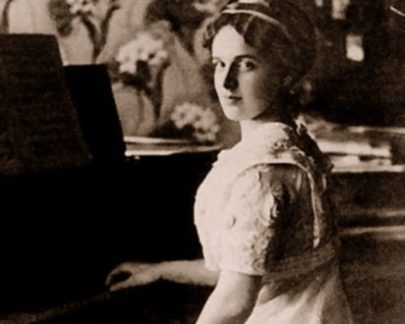
In 1912, at the poet Vicente de Carvalho’s house, the concept and name of the Society of Cultura Artística was defined – a pole for the enjoyment of art and the circulation of ideas. The meetings were in the format of lítero-musicais soirées and featured names such as pianist Antonieta Rudge (1899-1984), who played alongside Ukrainian violinist Mischa Elman in 1916, and conductor Gino Marinuzzi, who presented the Symphony in D minor , op. 125, by Beethoven, for the first time in São Paulo, in 1918.
The period was also marked by conferences: in 1915, Afonso Arinos de Melo Franco (1868-1916) coordinated five events on Brazilian culture – the third conference of the cycle featured Catulo da Paixão Cearense (1863-1946) in the musical part. Two years later, Alfredo Pujol gives seven lectures on Machado de Assis, currently republished by the Official Press.
The year 1917 is also a landmark for dance, with an exclusive soiree with the Russian Ballets Company, by Serguei Diaghilev, with the participation of conductor Ernest Anserme
With the number of subscribers growing considerably, in 1919 the board decided to have a land for its headquarters, which turns out to be, at the suggestion of the architect and partner Ricardo Severo, an area in the Florisbela street region.
1920 – 1929
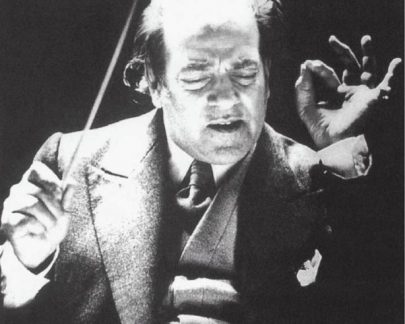
Shortly after the modernist week of 1922, Villa-Lobos opened the musical year of Cultura Artística with applauses. The success of the event makes this concert the beginning of a long collaboration between Villa-Lobos and Cultura Artística. In 1925 the composer gave three concerts, ending the season with his grand Mass-Oratory for mixed voices and orchestra. In 1929, after a very successful season in Paris, he also participated in two soirees in a row – a Villa-Lobos Festival.
The construction of the headquarters is the biggest challenge of the decade. Even with the lack of a theater that gives the entity independence of action and the difficulties of growth, the soirees remain with great names, among which we can mention the debut in the city of the opera Os Saldunes, by Brazilian composer and conductor Leopoldo Miguez (1850-1902) in 1924 and the conference about the work of the popular composer Ernesto Nazareth, from 1926, presented by Mário de Andrade, with the participation of Nazareth himself.
1930 – 1939

The 1932 program had everything to be wonderful: opening with the Brazilian Trio, followed by the Hamburg Choir Madrigal, Claudio Arrau, London String Quartet and pianists Ignaz Friedmann and Miecyslaw Münz. However, the Constitutionalist Revolution means that soirees have to be canceled. The following year, Nestor Pestana, one of the main drivers of Cultura Artística for 21 years, passes away. Later, the mayor Fábio Prado decides to change the name of Florisbela Street to Nestor Pestana Street, as it is called today. Esther Mesquita, daughter of journalist Júlio Mesquita, takes over the first secretary. Esther has a plan to create a permanent orchestra and, in 1934, she does a pilot experiment, with two symphonic concerts conducted by Ernst Mehlich.
Although difficult, the decade is marked by great stars, such as Alfred Cortor and Nicanor Zabaleta, in addition to the Boys Singers from Vienna, who first came to Brazil in 1936. In 1939, we still have the brilliant evening of the Léner Quartet, even with the outbreak of war.
1940 – 1949
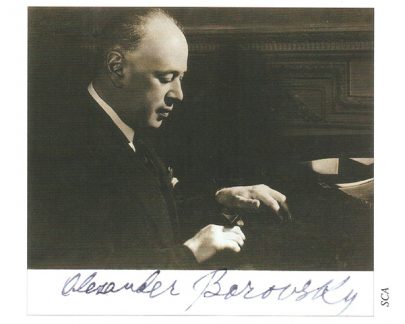
Early in the decade, in 1941, Ludwig van Beethoven’s full cycle of piano sonatas, with Fritz Jank (1910-1970), was presented for the first time in Brazil. Enthusiastic about the experience of the cycles, Esther Mesquita organizes other themed soirees such as the “Bach Recitals”, with Alexander Borovsky, and the “Beethoven Sonatas for Violin and Piano”. Two years later, we also received the “Tchaikovsky Festival”, with the São Paulo Symphony Orchestra and the Public Force Band, conducted by Eleazar de Carvalho and the participation, once again, of Fritz Jank at the piano.
In 1944, the Brazilian Symphony Orchestra came to São Paulo for the first time under the baton of its first conductor, the hungarian Eugen Szenkar (1891-1977). Another remarkable concert during the period is the performance of The Passion according to St. John by Bach, in 1935, the year of the 250th anniversary of the composer’s birth.
The following years marked the construction of the Teatro Cultura Artística: in 1945, the Municipality of São Paulo approved the plan designed by architect Rino Levi, and the constructions began in August 1947. On December 25 1949, Cultura Artística, the construction company and the designer responsible for the construction of the theater publish an advertisement in the main newspapers in the capital, presenting the future work as a Christmas gift to the city.
1950 – 1959
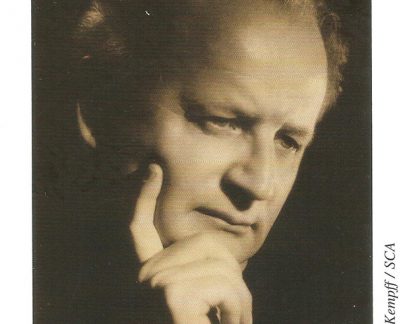
In 1950, the inaugural show of Teatro Cultura Artística took place, with the São Paulo Symphony Orchestra presenting works by Camargo Guarnieri and Heitor Villa-Lobos, conducted by their respective composers. With the construction of the headquarters, it is possible to increase the number of members, which increased to 2.500 in 1951.
The Seasons of the decade bring great names like the pianist Wilhelm Kempff, still in 1951, the pianists Alfred Cortot and Friedrich Gulda, in 1952, the mezzosoprano Fedora Barbieri, in 1953, and the baritone Robert Mcferrin, first black man to sing at the Metropolitan Opera in New York, which presents itself in Brazil in 1958.
The Theater, however, has damaged part of the wooden structure that supports the ceiling, in 1955, requiring a forced demolition of part of the building. Rino Levi takes advantage of the occasion and plans reforms on the stages of the two auditoriums to adapt them to the requirements of the opera and ballet companies. The theater was reopened in January 1956 and the following year, Cultura Artística created a stable dance company, with seven months of programming and 12 ballets. Without a sufficient number of partners to maintain itself and without conditions of survival, the company is extinguished in 1958.
1960 – 1969
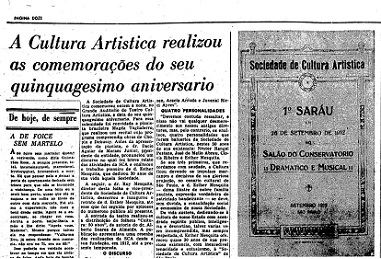
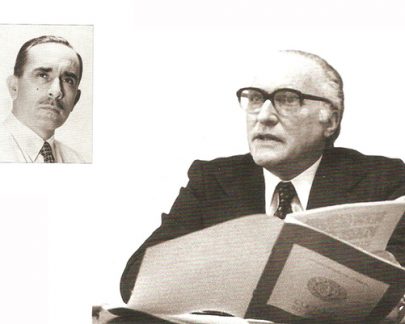
With financial problems, Cultura Artística decided to lease the theater to TV Excelsior for a period of three years, starting in 1960. In 1961, with the election of a new board, activities were suspended throughout the year. The resumption, in 1962, is marked by the launch of the 50th anniversary commemorative season. TV Excelsior gives away Teatro Cultura Artística for the concert and, in 1963, renews the lease for another three years. In December of the same year, Esther Mesquita passed away, and in January 1964, Ruy Mesquita asked for his removal. The difficult financial situation and the fact that he was again without a host theater caused a drop in the overall quality of programming and the consequent evasion of members. The board decides to invite musicologist Alberto Soares de Almeida to the position of executive secretary with the task of programming and implementing artistic activities. The great news, still in 1964, is the course on Shakespeare, with lectures by Décio de Almeida Prado, Barbara Heliodora, Rubem Rocha Filho, Paulo Mendonça, among others.
In 1965, Alberto Soares coordinates the formation of the São Paulo Pro-Music Orchestra and, with it, it is expected to win new audiences. Cultura Artística gives free entry to students at all concerts and the program is fully implemented – 12 events – with great success. In 1966, innovations followed: in addition to the high-level season, Cultura Artística surprised its members with the performance of a show that featured 12 songs from Jovem Guarda performed by classical singers, accompanied by chamber orchestra and harpsichord. The idea of performing works by Roberto Carlos, Erasmo Carlos, Wanderléa and the Beatles in original arrangements for orchestral training causes so much amazement and curiosity that, since the announcement, the demand for tickets has been enormous.
In 1967, the new board of directors for the triennium was elected: Luiz Mesquita, in the presidency; Alberto Soares de Almeida, in the executive secretary and Juvenal Ricci Ayres in the treasury. The reduced number of events is justified by the noncompliance of the theater renter, TV Excelsior.
1970 – 1979
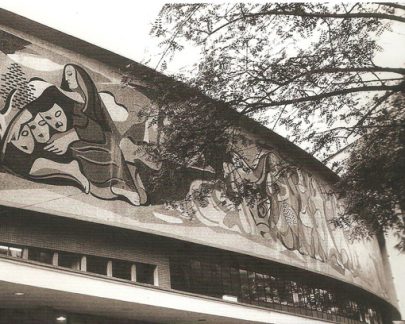
In 1970, the Sociedade de Cultura Artística tried in court to decree the eviction of TV Excelsior. In addition to noncompliance, the theater shows signs of deterioration, starting with Di Cavalcanti’s panel. In the following year, the federal government closes the Excelsior TV, the court executes the eviction and returns the keys of the theater to the Cultura Artística. The space is ruined and bills are overdue. The rent guarantors, Igor and Esther Pascowitch, agree to pay the losses. A simple reform was decided to place the theater in the conditions prior to the lease, which began in 1973 at a slow pace, in accordance with the financial availability of the Cultura Artística. The theater officially reopened in 1977, with the State Symphonyc performing works by the two Brazilian composers who opened the theater in 1950: Villa-Lobos and Camargo Guarnieri.
On the night of September 26, 1979, Cultura Artística presented its soiree number 1.000, with a concert by the Trio Baroque of Paris (harpsichord, oboe and violin).
1980 – 1989
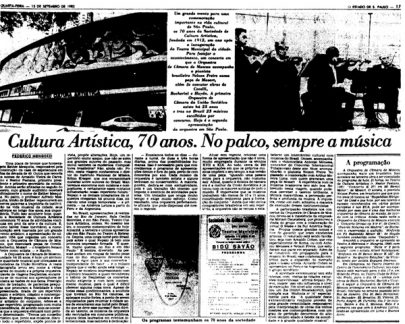
Photo: archive of the journal O Estado de S. Paulo
Since 1980, professionals have been hired for specific functions, including Gérald Perret, superintendent in charge of the executive part, the annual artistic program and the management of all the institution’s activities.
In 1982, the celebration of the 70th anniversary of the Cultura Artística Society brings concerts by the Moscow Chamber Orchestra, with the participation of Antonio Meneses (cello) and Nelson Freire (piano). The large auditorium of the Theater changes its name to the Esther Mesquita room and, between 1983 and 1984, the small auditorium is ready and changes its name to Rubens Sverner. The room opens on a gala night with the guitar of Turíbio Santos playing Villa-Lobos, Clara Sverner and Paulo Moura, performing Debussy, Ronaldo Miranda and Paul Creston. In the end, Gilberto Tinetti, Erich Lehninger and Watson Clis performs the Trio in B-flat, op. 99, by Schubert.
The following years were marked by great performances, such as the pianist Yefim Bronfman and the sisters Katia and Marielle Labèque, in 1985, Márcia Haydée, Richard Cragun, John Neumeier and soloists of the Ballet de Stuttgart, in 1986. In celebration of the 75 years of the Society, we have three performances by the English Chamber Orchestra and a recital by Lazar Berman, in addition to what is considered the biggest musical event of the year 1985: the Leningrad Symphony, conducted by Alexander Dmitriev. In 1988, the Leipzig Gewandhaus Orchestra performed under the leadership of Kurt Masur, in a context of radicalization of positions in Eastern Europe, shortly before the fall of the Berlin Wall.
In 1989, the organization of the season started to be made by a committee of three members and to be discussed and approved at a board meeting.
2000– 2009
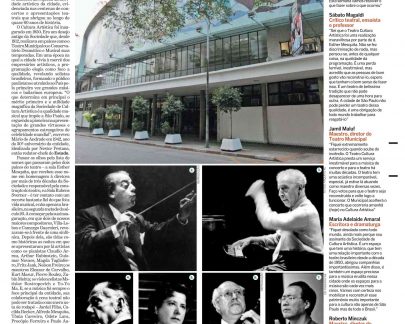
Between 2000 and 2001, the organization hosts The English Concert and Trevor Pinnock (conductor), Matthias Goerne (baritone) and Eric Schneider (piano), in addition to Ute Lemper. The celebration of 90 years, in 2002, brings a rare opportunity for the public of São Paulo: the Japanese doll theater of the Bunraku Association of Osaka. The following year, a season dedicated exclusively to jazz is announced for the first time – a genre that also marks the year 2005, with the presentation of the Lincoln Center Jazz Orchestra and Wynton Marsalis (conductor and trumpet).
In 2006, beyond all the international activities, Cultura Artística decided to intensify its socio-cultural vocation and created a pioneering project of classical music for children. A public success in small and large cities, the Ouvir para Crescer project was born to raise awareness and train new listeners through didactic and participatory presentations on music, its characteristics, genres and styles.
In 2008, the Cultura Artística suffers a blow in the middle of a beautiful season: its theater is consumed by a fire. In addition to the main room, all the technical equipment, lighting, stages, audience, the costumes and sets of the two pieces on display were completely destroyed, as well as two Steinway & Sons pianos.
The artistic part, however, is not intimidated by the accident: the 2009 season is one of the most stellars of all, with names like the Orchester des Champs-Élysées and Phillippe Herreweghe (conductor) and the Ballet Biarritz. In addition, Cultura Artística takes over the management of Teatro Promon, former Sala São Luiz, which changes its name to Teatro Cultura Artística Itaim, and proposes a series of chamber music there.
2010– 2019
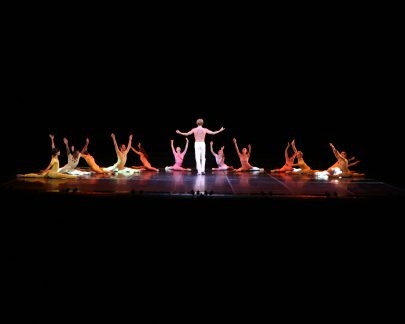
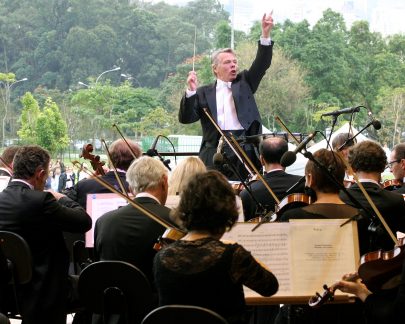
Foto 2: Izilda França
With the death of the president of the Cultura Artística Society, José Mindlin, in 2010, Pedro Herz, owner of Livraria Cultura, assumed the presidency. In his agenda are the challenges of reconstructing the theater and the celebration of the institution’s hundred years.
In 2011, the restoration of the panel Alegoria das Artes, by Di Cavalcanti, a landmark of the Theater’s facade, is completed. The initiative receives the award for the best property preservation project by IPHAN the following year. The season brings the Budapest Festival Orchestra with the participation of violinist József Lendvay and pianist Dejan Lazić, as well as the Rotterdam Philharmonic and the Porto Symphony.
The 100 years of existence of the Cultura Artística Society reaffirm its historical vocation in contributing to music and the great artists of its time. From April to November, the 2012 Season brings to the stage of Sala São Paulo a program full of stars, such as the Orchestra del Maggio Musicale Fiorentino, conducted by Zubin Mehta, and the Orchester National du Capitole de Toulouse, directed by Tugan Sokhiev, Lang Lang, Nelson Freire, Sol Gabetta, Joyce DiDonato and Renée Fleming, in addition to the Béjart Ballet, which will be performing at a centennial anniversary event.
The following years leave nothing to be desired in relation to the notoriety of the attractions received: after more than 20 years of absence on the stages of Latin America, the Royal Orchestra of the Concertgebouw of Amsterdam performs two concerts under the conduction of its principal conductor, Mariss Jansons, in addition of a free open-air concert in the external audience of the Ibirapuera Auditorium in 2013, the same year in which the Simón Bolívar Orchestra, conducted by Gustavo Dudamel, performs two extra concerts in Sala São Paulo and another open rehearsal to students. Between 2014 and 2019, names like Nelson Freire, Bavarian Radio Symphony Orchestra, Joyce DiDonato, Philippe Jaroussky, Hespérion XXI and Jordi Savall, Evgeny Kissin, Vienna Philharmonic Orchestra, National Orchestra of Santa Cecília, Ebéne Quartet, Trio Wanderer, András Schiff, Duo Assad and Antonio Meneses pass through our program, along with many other highlights that can be seen on the previous events page.
Cultura Artística Educativo is also consolidated and an average of 6 thousand people are benefited annually by masterclasses, open rehearsals or by the distribution of socio-educational tickets. In partnership with the Magda Tagliaferro Foundation, Cultura Artística assumes the institution’s traditional scholarship program, supporting the career of 14 young musicians per year.
In July 2019, the first reconstruction phase of the Teatro Cultura Artística is also celebrated. More information can be seen here.

